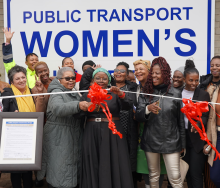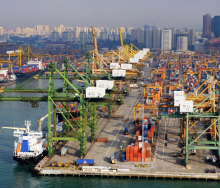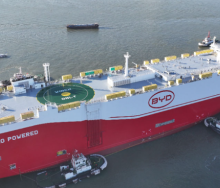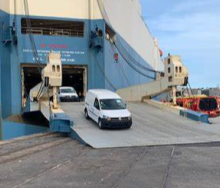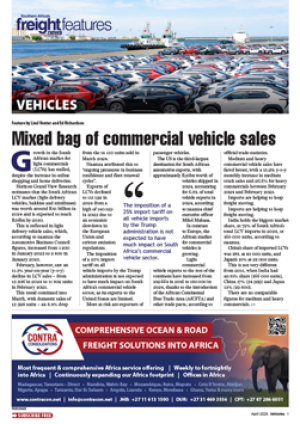Namibia’s road network has famously received the thumbs up from the World Bank as being the best in Africa, proof of the country’s Vision 2030 ambitions to become a multimodal logistical hub connecting hinterland cargo with the ports of Walvis Bay and Lüderitz.
However, primary highways linking the two ports through the country’s vast interior could take a pounding if plans proceed to move transhipment loads away from ocean freight after recent announcements that Lüderitz will not be served by feeder vessels anymore.
This is after Ocean Africa Container Lines (OACL) announced that it will not be calling at Namibia’s southernmost port any more due to “exorbitant ship charter hire rates” (*).
In a recent statement, OACL added that “coupled with the extremely high marine fuel cost, (it) makes our service unaffordable”.
News of OACL’s feeder service termination coincided with Maersk announcing that its last vessel call connecting Lüderitz with the ports of Walvis and Cape Town would most likely be on April 23.
Instead of coming up with an alternative transhipping solution, Maersk said it would “for the foreseeable future” move cargo from Lüderitz to Walvis for sailings to Europe, the Middle East and the Far East.
Moving cargo meant for export from Lüderitz, especially significant loads of frozen fish, means container loads trucked by road will have to be decreased from 28 tonnes to about 21 tonnes to make space for cold-chain requirements such as fuel needed to run generator sets.
Moreover, said Willie Prosser of Novaship Namibia, main highways like the B4 in the south and the B2 up north, respectively connecting Namibia’s ports with its interior, are destined to deteriorate under increased heavy haulage.
The logistics company’s managing director, who also heads up the Walvis Bay Port Users’ Association, said the B4 between Keetmanshoop and Lüderitz was already being hammered by manganese trucks bringing in ore for export from the Northern Cape in South Africa.
On a recent trip from Lüderitz to Walvis, he said he had counted about 26 trucks every 20 minutes, and that was up to the C14 turn-off, an alternative gravel road going north.
Commenting on whether the C14 could be used by trucks taking cargo from the one port to the other, Prosser said: “It will never happen.”
Whether that road will ever be tarred, he stressed that “it’s unsustainable”.
It means cargo that can be transhipped from Lüderitz to Walvis over a distance of 254 nautical miles (470 kilometres) will now have to go all the way around via Windhoek – a distance of 1 262.8 kilometres.
Apart from the impact of excessive road freight on the B4 in the south, Prosser said the B2 up north from Okahandja to Walvis Bay was also going to be worse for wear sooner rather than later.
He emphasised that corridor cargo coming in from the north-east was already placing strain on the B2, a port-feeder highway that would now see even more loads since the decision to terminate transhipping between Lüderitz and Walvis.
* See related report from today.

